Take a tour of the city as we stroll down some of London’s most famous streets
abbey road – a must-see for music lovers
Best known for… appearing on the cover of the Beatles’ album Abbey Road
On a balmy summer day in 1969 four young men were photographed walking across an unremarkable zebra crossing. That shot, used for the cover of the Beatles’ second-best selling album, made Abbey Road an international tourist destination. Located in the affluent St John’s neighbourhood, the crossing is outside Abbey Road Studios, where the Beatles and other musical icons including Adele, Fela Kuti, Kate Bush, Amy Winehouse, Pink Floyd and Lady Gaga recorded some of the twentieth and twenty-first centuries’ greatest hits. Now designated a historic site, the studios are still very much live and kicking, so if you’re planning on taking a selfie keep an eye out for any famous musicians on their way out of a recording session.

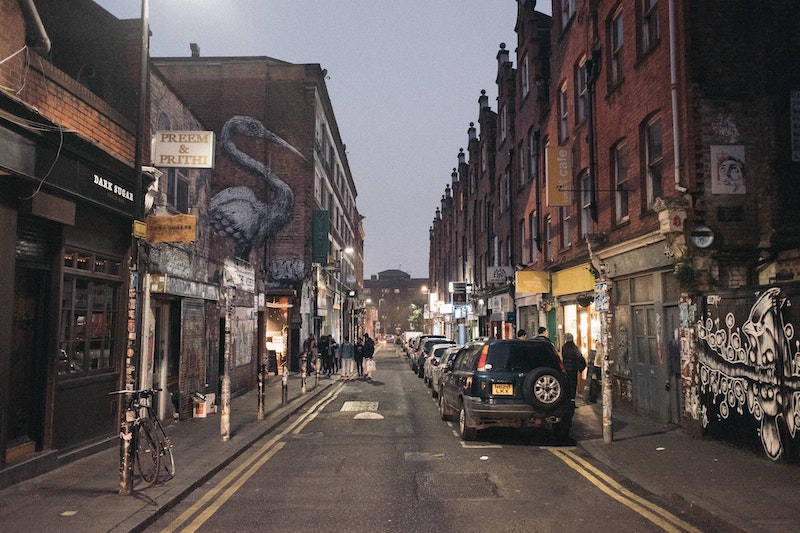
brick lane
Best known for… delicious curries, vibrant graffiti and trendy shops and bars
Taking its name from the brick kilns brought over by early Flemish settlers, Brick Lane, which is found in the historically poorer East End of London, has become one of the trendiest places to visit in the city. Five hundred years ago Brick Lane was simply a path across the fields in the farming country just outside of the City of London’s limits. Today, the area is always buzzing; a true embodiment of London’s proud multicultural past and present. Melding Dutch, Russian, Huguenot, Jewish, Hinduism and Muslim cultures, you’ll find street food, pop-up markets and fashion events alongside independent coffee shops, art galleries and boutiques. Our favourite Bengali curry house is Muhib, with delicious vegetarian options as well as house specialities including a fragrant green chicken and a fiery king prawn rezala. Any market lovers should visit on a Sunday, when Brick Lane, Spitalfields and surrounding areas are taken over by stalls piled high with homemade food, designer clothes, artisan jewellery, studio pottery, objects and antiques. Visitors to the area’s winding alleys might come across the impressive Christ Church Spitalfields and, towering over the scene below, the old Truman Brewery – now renovated into a thriving arts and business centre.
the mall
Best known for… its royal residents and impressive vistas
Connecting Buckingham Palace to Trafalgar Square, the Mall is one of the most famous streets in the world. Renowned for its stately appearance and impressive sightline from Admiralty Arch to the palace, the tree-lined boulevard divides two of the city’s oldest Royal Parks – St James’s Park and Green Park – both now stunning public gardens with abundant plants, flowers, trees, and in St James’s, pelicans waddling around its lake. The Mall is synonymous with grandeur and ceremony, being used for state visits and national events including Trooping the Colour, the monarch’s birthday parade and as the finishing line for the London Marathon. The area’s name comes from the site’s original use as a playground for “pall-mall”, an early form of croquet. Some believe that the characteristic red of the Mall’s road surface was deliberately created to mimic a red carpet leading foreign dignitaries up to Buckingham Palace, although a more reasonable, albeit less romantic explanation, is that this specific asphalt provides a suitable surface for heavy usage by the Household Cavalry.
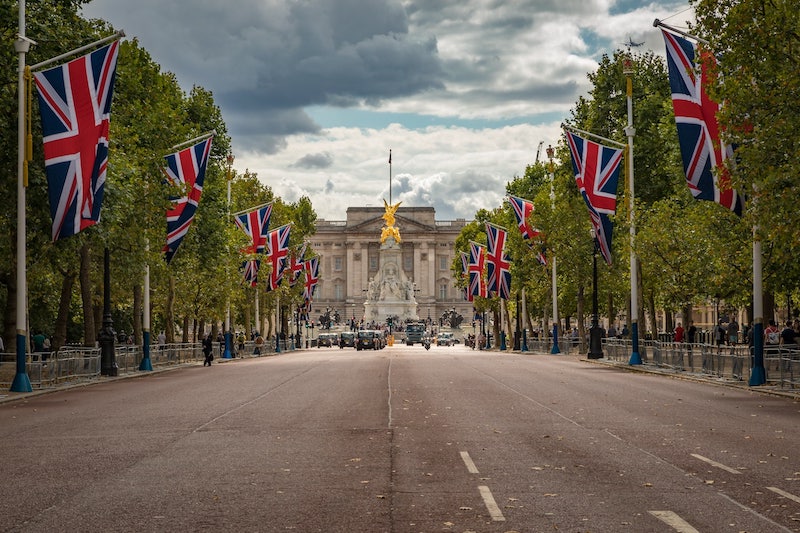

camden high street
Best known for… its colourful characters, unusual shops and entertainment options
Historically known as a home for bohemians and students of life, Camden High Street is a perpetually bustling melting pot of cultures, with people spilling out from market stalls, bars and restaurants. Head north along the high street and you’ll come to Camden Lock, where Regent’s Canal crosses Camden High Street. The conversion of Camden Lock’s once-industrial wharves and warehouses into craft markets, restaurants and bars was instrumental in establishing Camden as a must-see destination for tourists. Here you’ll find unique and bizarre shops, including one dedicated solely to the Moomins (Tove Jansson’s magical Swedish creatures) and one known for its futuristic neon stock and pumping bass. The alternative music scene has long been the beating heart of the street. The area famously fostered the singer Amy Winehouse’s early career, where she first performed in intimate backroom venues. Winehouse was once a regular audience member at the music venue and pub The Dublin Castle, found just off the high street, where you can still catch a show today.
baker street
Best known for… being the home of one of the world’s most famous detectives
Located in Marylebone, a West End district with its roots in the seventeenth century, Baker Street runs south from The Regent’s Park down to Portman Square, behind Selfridges. It was named after its builder William Baker, but its name is far more familiar to fans of literature as the fictional home of Sherlock Holmes, Sir Arthur Conan Doyle’s savant sleuth. Even 150 years after the first book was published, the detective holds an undying appeal, portrayed in two Hollywood films by Robert Downey Jr., and in a BBC blockbuster series by Benedict Cumberbatch. In the 1970s singer Gerry Rafferty had a major international hit with his song “Baker Street”, which was written on location. Today the street is home to cafes and bars as well as The Sherlock Holmes Museum, aptly situated at 221B Baker Street.
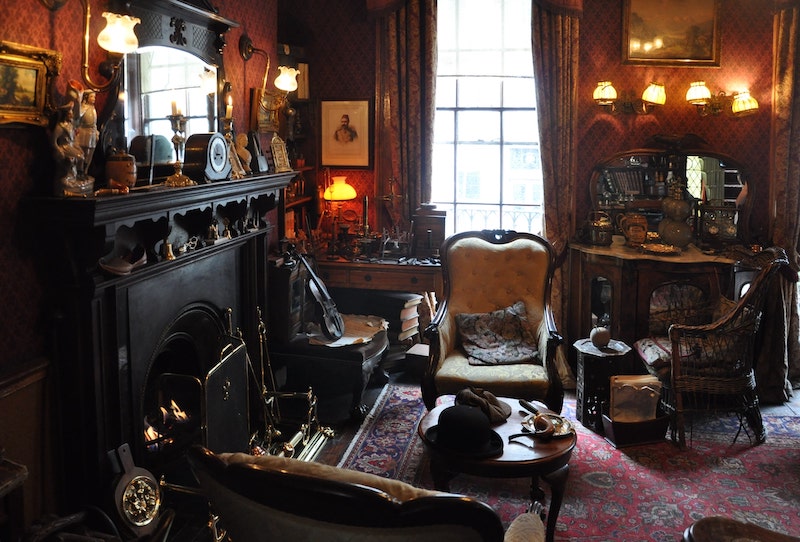
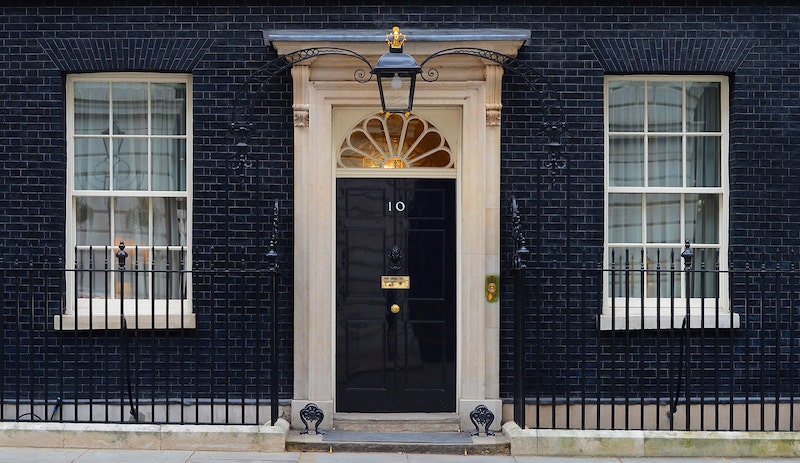
downing street
Best known for… being the home to Britain’s government
Whether on the news or watching Hugh Grant emerge from that iconic black door in Love Actually, Downing Street is known around the world as the home of the British Prime Minister. A stone’s throw from the Houses of Parliament and Westminster Abbey, you’ll find the street in the borough of Westminster. 10 Downing Street – often referred to simply as Number 10 – was first offered by King George II to Robert Walpole, “First Lord of the Treasury” in 1732, as a home. This tradition continues today, with Number 10 being the official residence of the Prime Minister, Number 11 housing the Chancellor of the Exchequer, and numbers 9 and 12 used for the Chief Whip and other important governmental positions. Though today the street is fittingly grand in appearance, it was not always so luxurious. Early state officials were wary of living at Number 10 owing to the soft soil beneath it making it prone to sinking. As the symbolic and actual heart of British political power, nowadays the entrance to the street is heavily guarded with railings and armed police, but it’s still possible to catch a glimpse of the famous doors (one of the best views is from the top deck of a classic double-decker London bus).
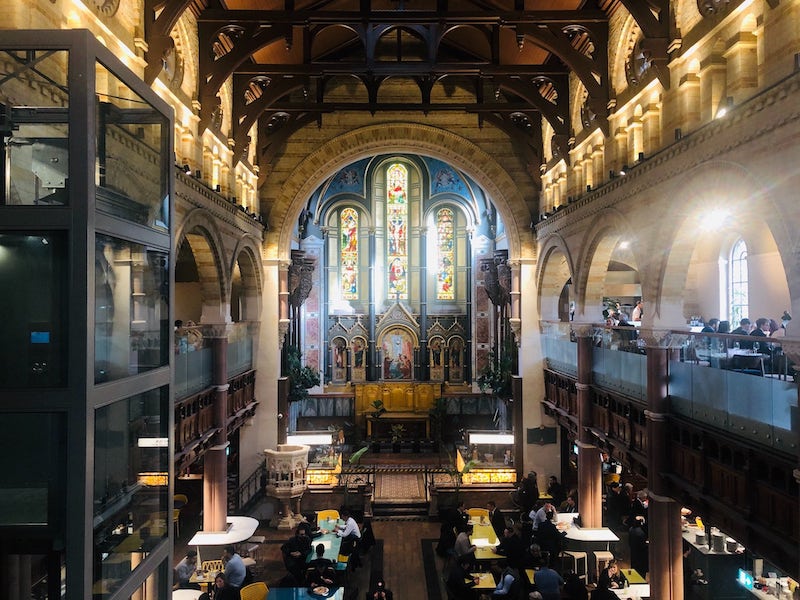
north audley street
Best known for… luxury boutiques and a taste of London’s decadent food scene
Named after Sir Hugh Audley, this area’s original owner, North Audley Street can be found within stylish Mayfair. Along the tree-lined street of elegant townhouses there are boutiques, delis, cafés and restaurants for a full day out. Serene despite its proximity to Oxford Street, our favourite places to eat include the sustainable street food hall Mercato Mayfair (located in the stunning St Mark’s Church), the contemporary Indian restaurant Bibi Restaurant and the new zero-waste venture by Chantelle Nicholson, Apricity. One local delight not to be missed is McQueens Flowers, internationally renowned for their stunning floral creations at events including Vanity Fair’s Oscars After Party and the Wimbledon Tennis Championship.
the king's road
Best known for… its cultural history
With over 300 boutiques alongside restaurants, galleries and cultural hot spots, the King’s Road is one of the trendiest streets in one of London’s most desirable neighbourhoods, Chelsea. The road’s name was first coined in the seventeenth century when King Charles II used it as his private thoroughfare from St James’s Palace to Kew Gardens, dressed in his customarily flamboyant style. During the 1960s the King’s Road drew the world’s eye as a symbol for counterculture fashion, with shops like Mary Quant’s BAZAAR, which popularised the miniskirt, and the chemist-come-record shop known as The Chelsea Drugstore that was immortalised by Mick Jagger’s reference to it in The Rolling Stones’ song “You Can’t Always Get What You Want”. In 1971 Vivienne Westwood opened her first punk fashion boutique Let it Rock, a shop that changed its name and decor as the designer developed her ideas and clothes (for devotees, the Westwood shop still exists, immortalised as World’s End). Today the road is home to the Saatchi Gallery and weekend visitors can explore a pop-up market in the Duke of York Square.

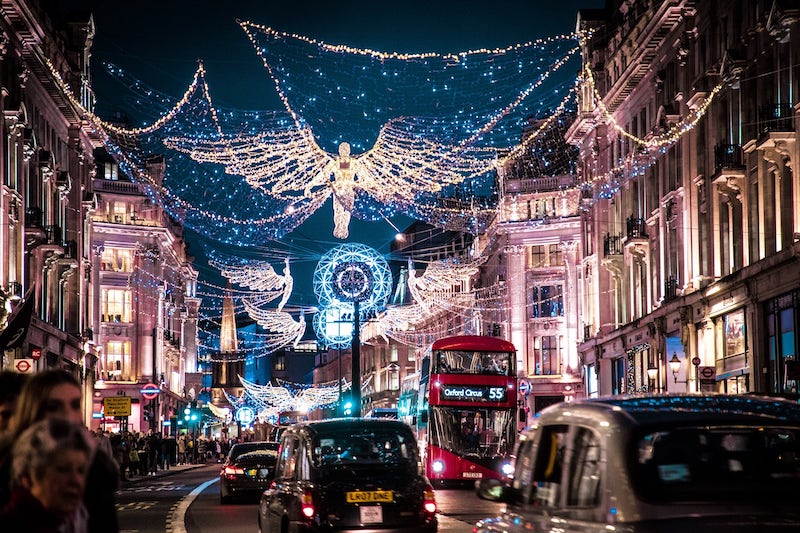
oxford street
Best known for… its world-class shopping
Running east from Tottenham Court Road to Hyde Park, Oxford Street is always busy with crowds shopping, eating and drinking. One of the busiest shopping streets in Europe, it’s home to iconic British brands including Selfridges and John Lewis. Here you’ll find flagship shops and all of the classic high street brands, as well as cinemas, bars and restaurants. If you need to rest your legs, The Brasserie of Light at Selfridges serves delicious food under an installation by famed British artist Damien Hirst, or for something a little more relaxed The Barley Mow’s restored bar is the perfect spot to catch your breath over a glass of wine. Known as Tyburn Road until the eighteenth century, Oxford Street got its name as the favoured route for travellers to the city of Oxford in Oxfordshire. The road’s association with shopping dates back centuries to a time when the street was lined by small, independent vendors in single houses. However, with the introduction of the Central Line to the London Underground in 1900, Oxford Street’s popularity grew steadily to become one of the hottest retail addresses anywhere in the world.
park lane
Best known for… being home to some of London’s most prestigious hotels
Once a country lane running parallel to Hyde Park, today Park Lane is lined with luxury hotels including The Dorchester, 45 Park Lane and JW Marriot Grosvenor House, as well as the best serviced apartments in London. With an air of unrivalled sophistication, Park Lane melds the bustle of central London with vistas of the 350-acre expanse of Hyde Park. Over the years establishments along the road have hosted US Presidents, British royalty, Prime Ministers and celebrities including Fred Astaire and Elizabeth Taylor. Despite the expansion of London’s wealth during the twentieth century, Park Lane remains the most valuable and desired property in the board game Monopoly, an indication of its elite status. We recommend visitors to the area start at The Animals In War Memorial on the northeast edge of Park Lane, explore Hyde Park and finish by wandering up one of Park Lane’s historic side streets to discover everything that Mayfair has to offer.
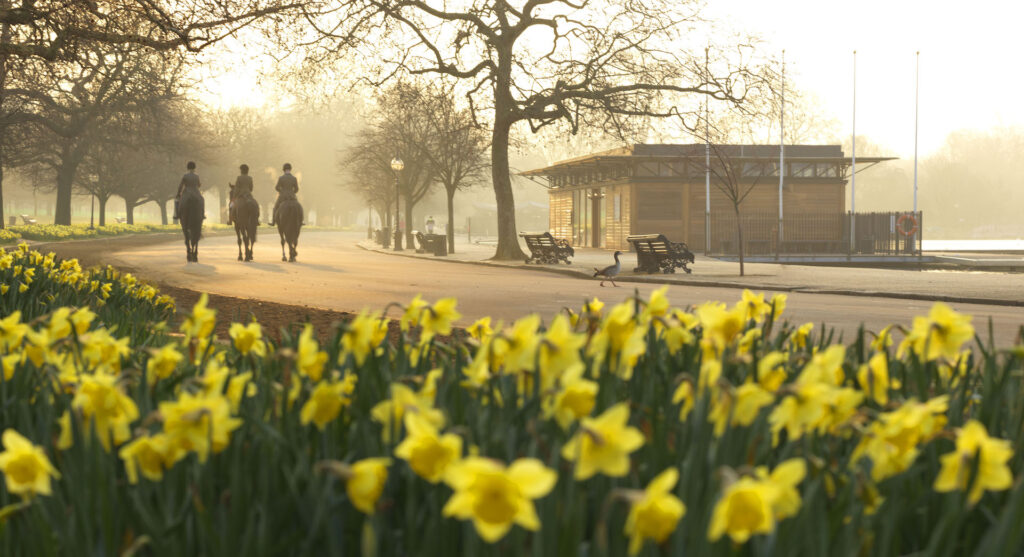
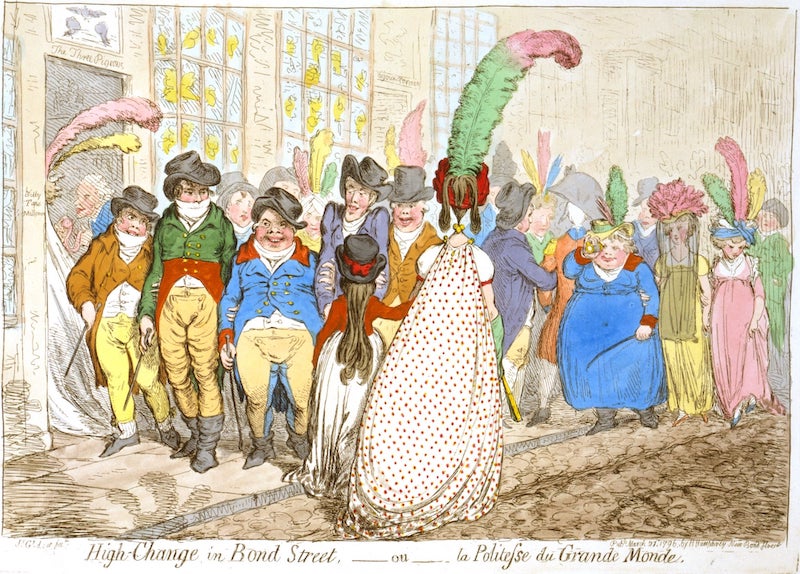
bond street
Best known for… its promenade of shops selling luxurious fashion, bespoke design, jewellery and art
For anyone interested in a high-end shopping experience, browsing luxury boutiques and top tier heritage brands including Asprey, Montblanc and Phillip’s Auction House, Bond Street is hard to beat. Chanel, Cartier and Louis Vuitton hold their flagship stores here, attracting millions of visitors each year and securing the street’s reputation as one of the most prestigious shopping destinations in the world. Since 1700 the thoroughfare has had a reputation as a playground for society’s most lavish and influential individuals. Admiral Horatio Lord Nelson, viewed by many as the Royal Navy’s greatest officer, lived on the street (look out for a blue plaque commemorating this) as did the Irish author Jonathan Swift, most famous for writing Gulliver’s Travels. Bond Street is mentioned in Jane Austen’s novel Sense and Sensibility and in Suzanna Clarke’s novel Jonathan Strange & Mr. Norrell, where it is described as having “the most fashionable shops in all the kingdom”. If you’re visiting, don’t miss Lawrence Holofcener’s 1995 sculpture “Allies”, commemorating the special relationship between Winston Churchill and Franklin D. Roosevelt.
piccadilly
Best known for… being a hub of entertainment, crowds and neon billboards
One of the busiest streets in the city, Piccadilly has been an important London road since the Middle Ages. Its name is derived from the house of tailor Robert Baker, who built “Pikadilly Hall” in 1612 (perhaps so named because of the items Baker sold: a type of high lace collar known as piccadillies). Piccadilly’s eastern endpoint runs into the junction which gave rise to the popular British saying “As busy as Piccadilly Circus.” Stand still for a moment here at the fountain with its bronze statue of Eros and take in the glitzy buzz of Piccadilly Circus’s towering neon billboards, street performers and the constant thrum of passersby. We adore this contrast with quieter Piccadilly, which boasts historic landmarks and heritage attractions. Here you’ll find the famous Victorian department store Fortnum & Mason, the lively music, arts and culture programme of St James’s Church, and The Criterion, a grade II-listed theatre which has been running since 1874. For an exceptional day out, we recommend breakfasting in the art deco glamour of The Wolseley before heading across the road to an art exhibition at the Royal Academy of Arts, followed by a cocktail in the Rivoli Bar of world-famous hotel The Ritz.


the strand
Best known for… its iconic landmarks and rich history
Connecting the City of London to Westminster, the Strand’s name dates back to 1185, deriving from the Old English word meaning ‘bank’ or ‘shore’. Running into the impressive Fleet Street, home to the Royal Courts of Justice, the Strand is renowned for its institutional significance and cultural offering. It is home to the neoclassical splendour of Somerset House, home to the Courtauld Institute of Art, and boasting large courtyards, outdoor cinema events, art exhibitions and bar terraces. Further along the Strand you’ll find three theatres including the Savoy, Adelphi and Vaudeville as well as The Savoy Hotel, Twinings’ 300-year-old tea shop and a rather charming family-owned hattery. Look out for Simpson’s in the Strand, one of the oldest restaurants in London, serving solely British cuisine. Running from Chancery Lane to the National Gallery, with Covent Garden to the north and the Thames river to the south, we recommend wandering the Strand to enjoy London’s cultural heritage in all its glory.
At Hyde Park Residence we’re proud to deliver a welcoming, secure and comfortable home with a caring attitude and high quality service. Learn about staying with us here.
Copyright © 2025 Hyde Park Residence. All rights reserved.


